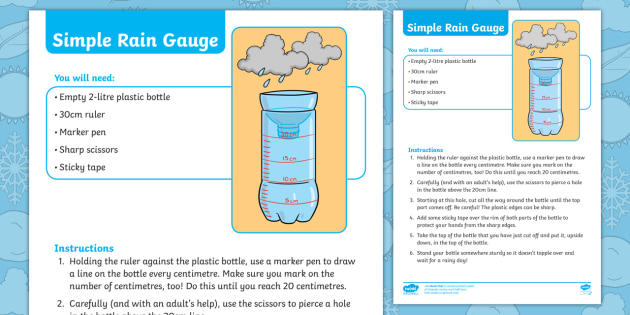Unveiling the Science Behind Rainfall Gauges: Just How These Devices Play an Essential Duty in Environment Research and Environmental Monitoring
Rain evaluates, apparently basic devices, hold an extensive significance in the realm of environment research study and ecological tracking. These unassuming instruments quietly accumulate one of nature's most essential aspects-- rains. Yet, behind their unpretentious exterior exists an intricate scientific research that is vital for comprehending the dynamics of our environment. As we peel off back the layers of this scientific veil surrounding rainfall evaluates, we uncover a globe where accuracy, information precision, and thorough monitoring converge to introduce a deeper understanding of our transforming environment and its influence on the world.
Relevance of Rain Scales
Rainfall gauges play an essential role in tracking and determining precipitation levels, giving necessary data for climate research and evaluation. These devices are basic in quantifying the quantity of rainfall that occurs in a details location over a specific period. By gauging and gathering rainwater, rain assesses offer important insights right into the circulation and strength of rainfall, helping meteorologists, hydrologists, and climatologists in understanding weather condition patterns and patterns.
One of the crucial reasons that rainfall evaluates are critical is their capability to give localized and accurate data. Unlike satellite or radar-based dimensions, which use wider monitorings, rainfall assesses deal exact information details to the area where they are put. This local information is important for numerous applications, consisting of flooding projecting, dry spell monitoring, and water source management. Additionally, long-term data collected from rain evaluates helps in analyzing environment adjustment effects and patterns, adding considerably to scientific research study and decision-making processes. Basically, rain evaluates work as vital tools in the area of weather forecasting and ecological scientific research, playing a critical role ahead of time our understanding of weather condition and environment dynamics.
Kinds Of Rain Scales

Performance and Procedure
In the world of environment research study and atmospheric research studies, the effectiveness of rain evaluates lies in their detailed functionality and exact operational devices. Rain determines are made to properly determine the amount of rainfall that falls over a specific location throughout a set period. These devices normally consist of a channel that accumulates rain and networks it into a determining tube. The measuring tube is marked with calibrated dimensions that allow for the specific metrology of rainfall.
The functionality of rain determines is based on the concept of collecting and gauging rain in a standardized fashion. This collected information is crucial for comprehending local climate patterns, tracking long-term climate patterns, and evaluating environmental impacts. To guarantee exact dimensions, rain evaluates requirement to be purposefully put in open areas far from blockages such as buildings or trees that might disrupt the collection process.
The operational element of rain determines entails normal maintenance to stop debris build-up, calibration checks to preserve measurement precision, and information taping for analysis (rain gauge). On the whole, read this the capability and operation of rainfall determines are important for gathering reliable precipitation information important to environment research study and ecological tracking
Function in Environment Research
Offered the crucial value of precise rainfall measurements in understanding weather patterns and environmental effects, the duty of rain assesses in environment research is essential. Rainfall determines provide vital data for climate research study by quantifying the amount of precipitation that falls over a particular location throughout an offered period. This information is important for checking long-term trends best site in rainfall patterns, evaluating the impact of environment change on rainfall circulation, and boosting environment designs.

Environment researchers make use of data gathered from rainfall gauges to analyze variations in rainfall levels, recognize regional environment fads, and examine the efficiency of water resource administration methods. By comparing historic precipitation information with present measurements, researchers can discover changes in precipitation patterns, such as changes in the regularity or intensity of rainfall events. This details is important for comprehending just how climate change is affecting rainfall dynamics and can aid policymakers make informed choices regarding adjustment and mitigation techniques.
Applications in Ecological Surveillance

In flooding projecting, rainfall scale data assists to track rainfall strength and circulation, permitting authorities to issue timely cautions and take essential steps to mitigate flood dangers (rain gauge). Dry spell surveillance counts on rainfall scale data to evaluate moisture levels in the dirt and track rainfall deficits, assisting in the identification of drought-prone areas and the implementation of dry spell action methods
Moreover, rainfall scale data plays a vital role in water source management by supplying information on water availability and use patterns. In addition, in farming, rain gauge information assists farmers in enhancing irrigation routines, crop option, and general ranch administration techniques based on local precipitation patterns.
Final Thought
Finally, rainfall evaluates are essential tools for determining precipitation, offering beneficial data for environment research and environmental monitoring. With various kinds and performances, rain determines play an web essential role in understanding precipitation patterns and their influence on the atmosphere. By properly gauging rains, these devices add to the innovation of scientific expertise and aid in making notified decisions associated to water source management and calamity readiness.
Rainfall assesses play a vital function in tracking and determining rainfall levels, giving necessary data for environment research and evaluation. The conventional rain scale, understood as the "tipping pail" scale, is one of the most frequently made use of tools. Ultrasonic rainfall gauges usage sound waves to discover the existence of rainfall, giving real-time data on precipitation degrees.Environment scientists utilize information gathered from rain evaluates to examine variations in precipitation levels, determine local climate patterns, and review the effectiveness of water resource administration methods.In conclusion, rainfall evaluates are important tools for measuring rainfall, providing valuable data for climate research study and environmental tracking.